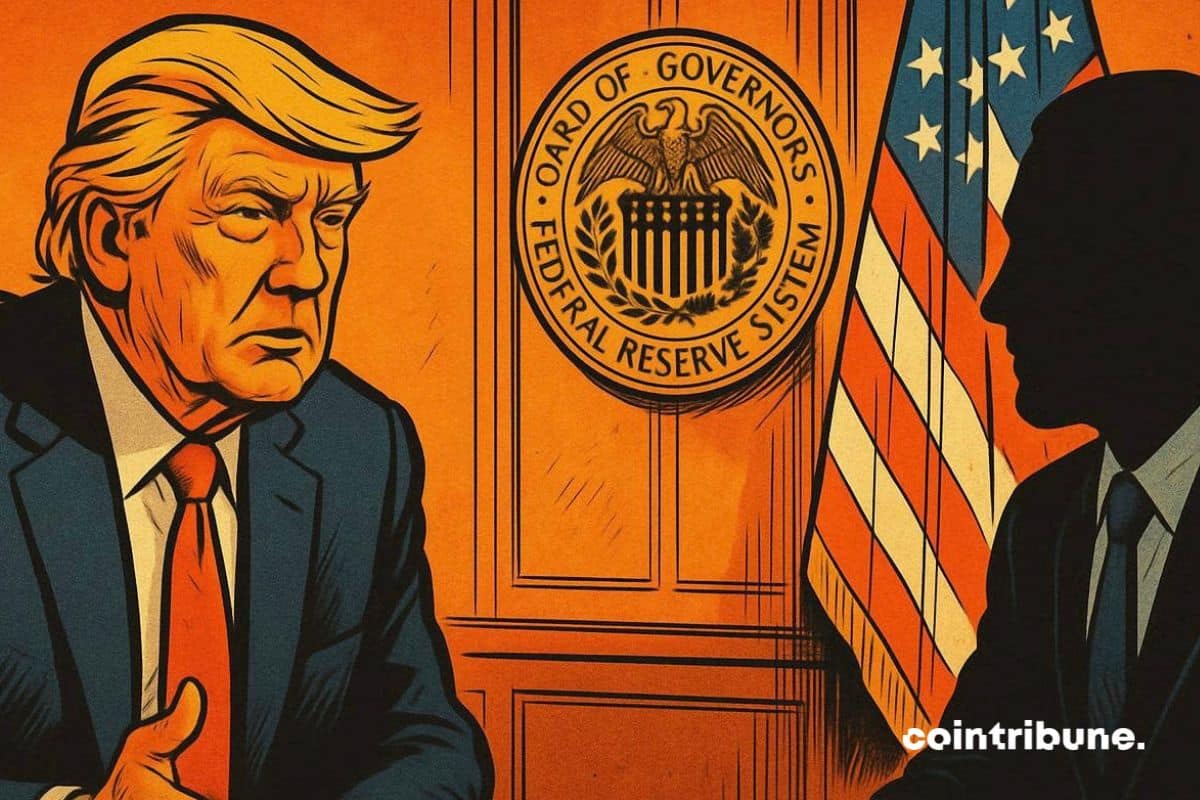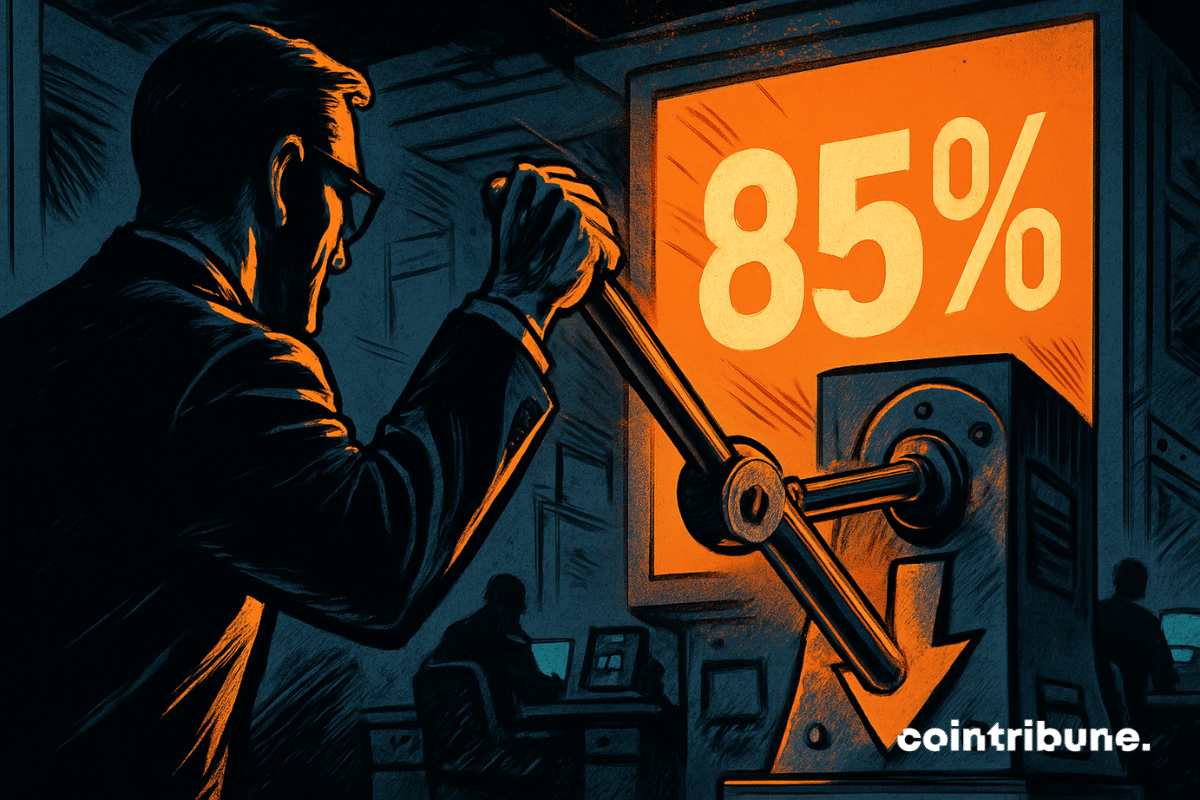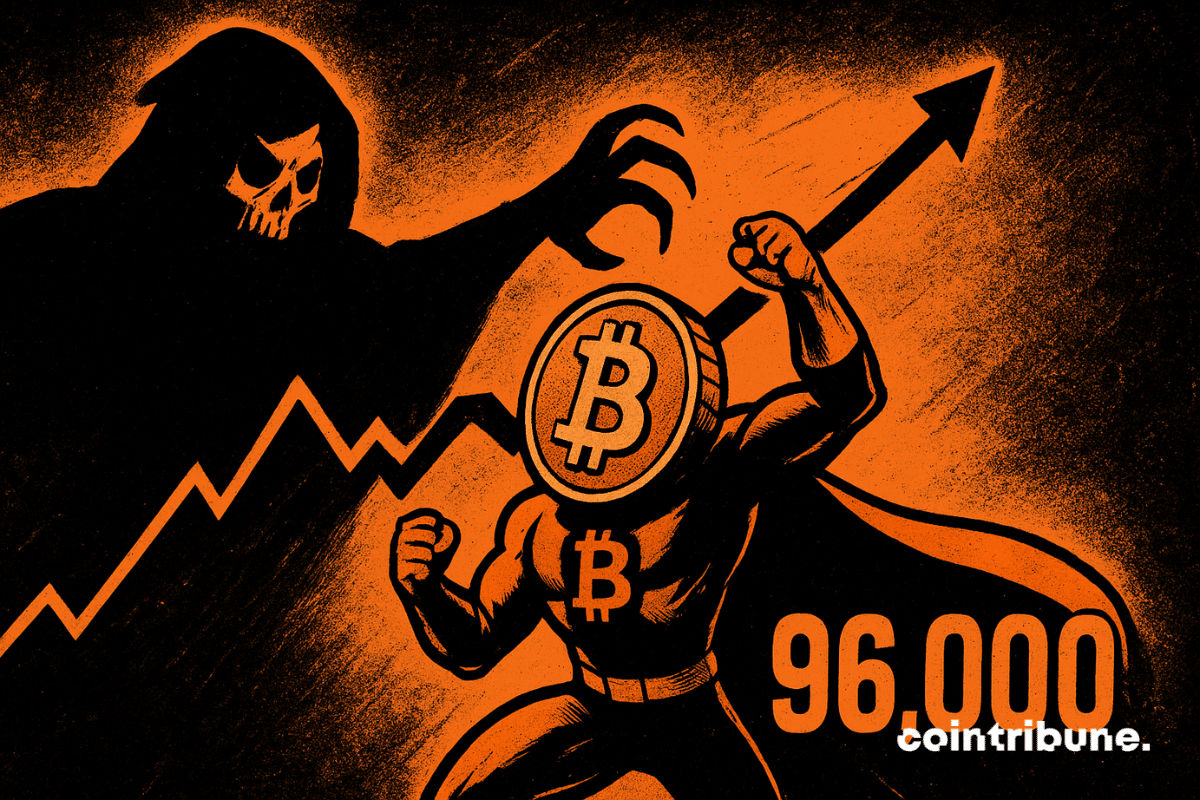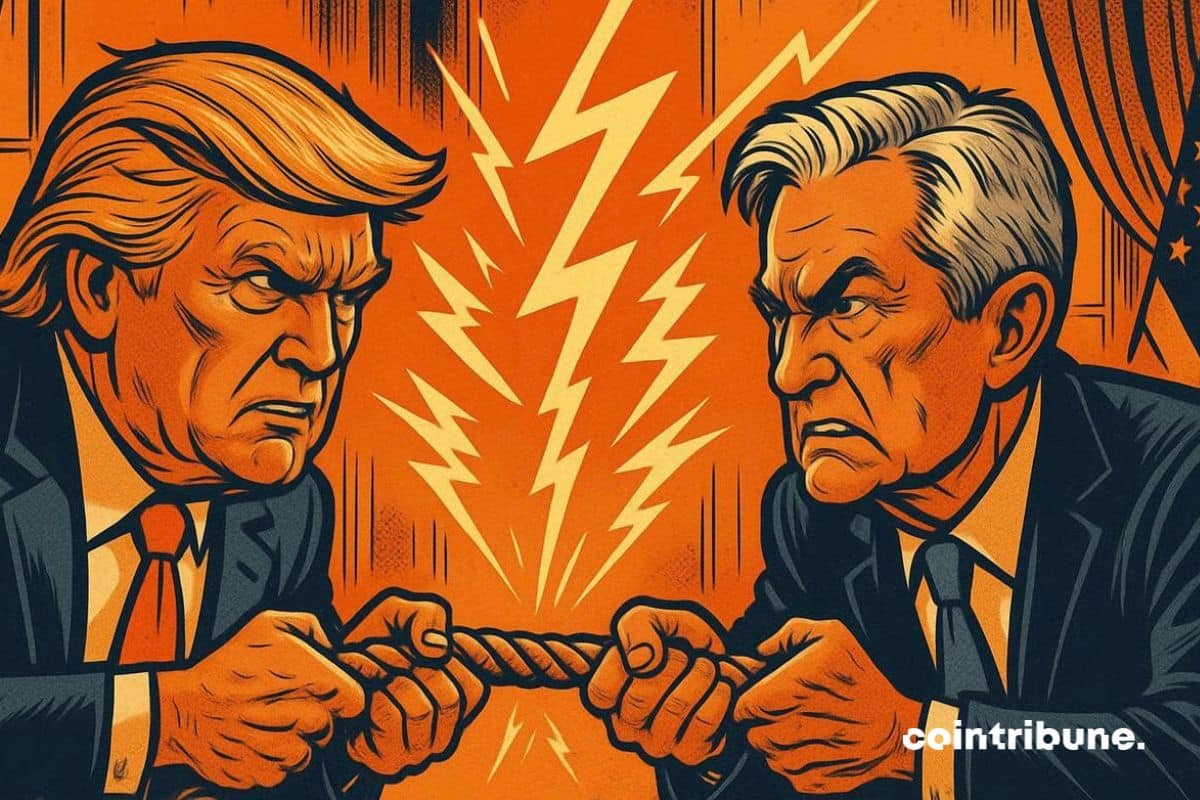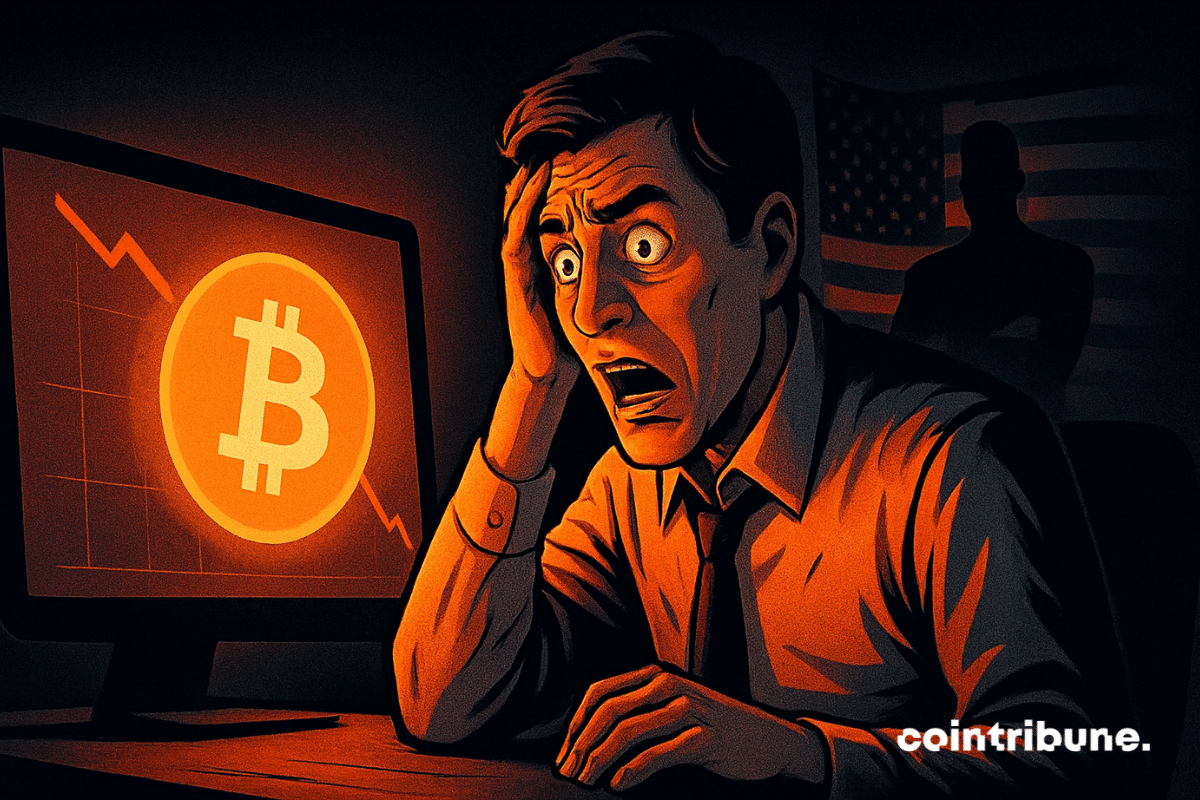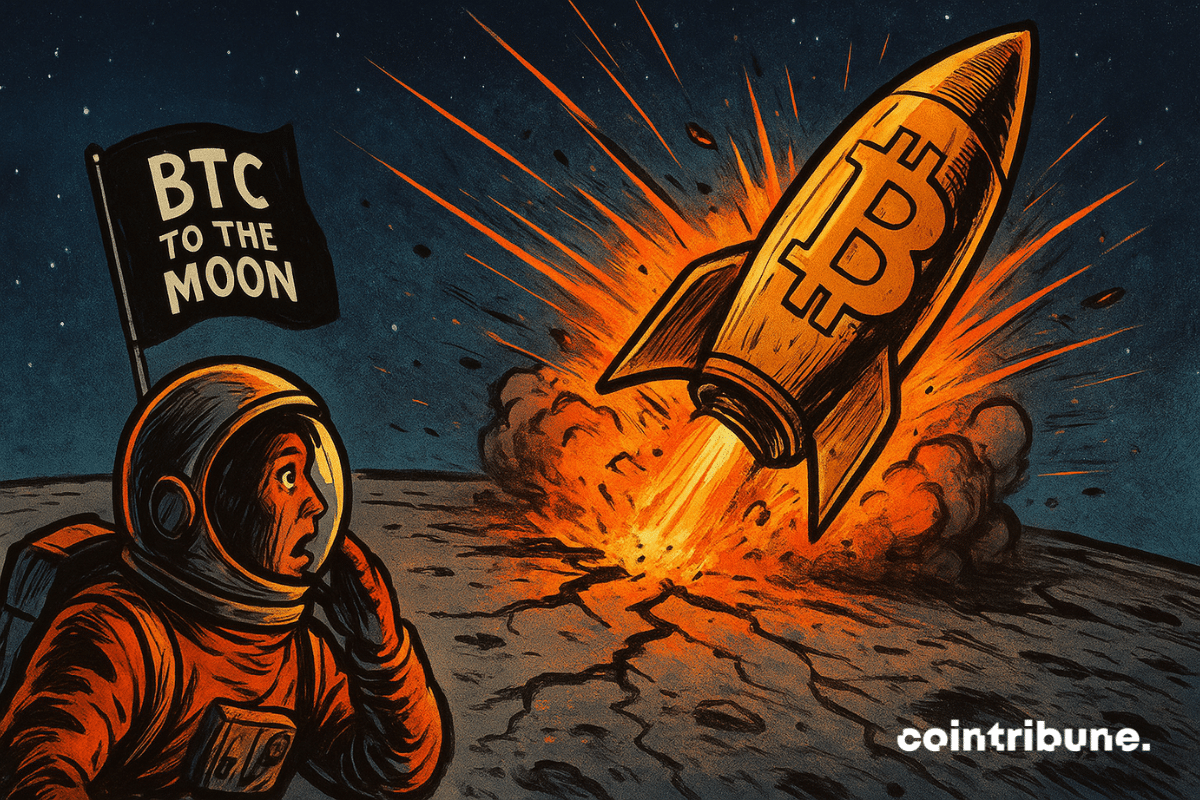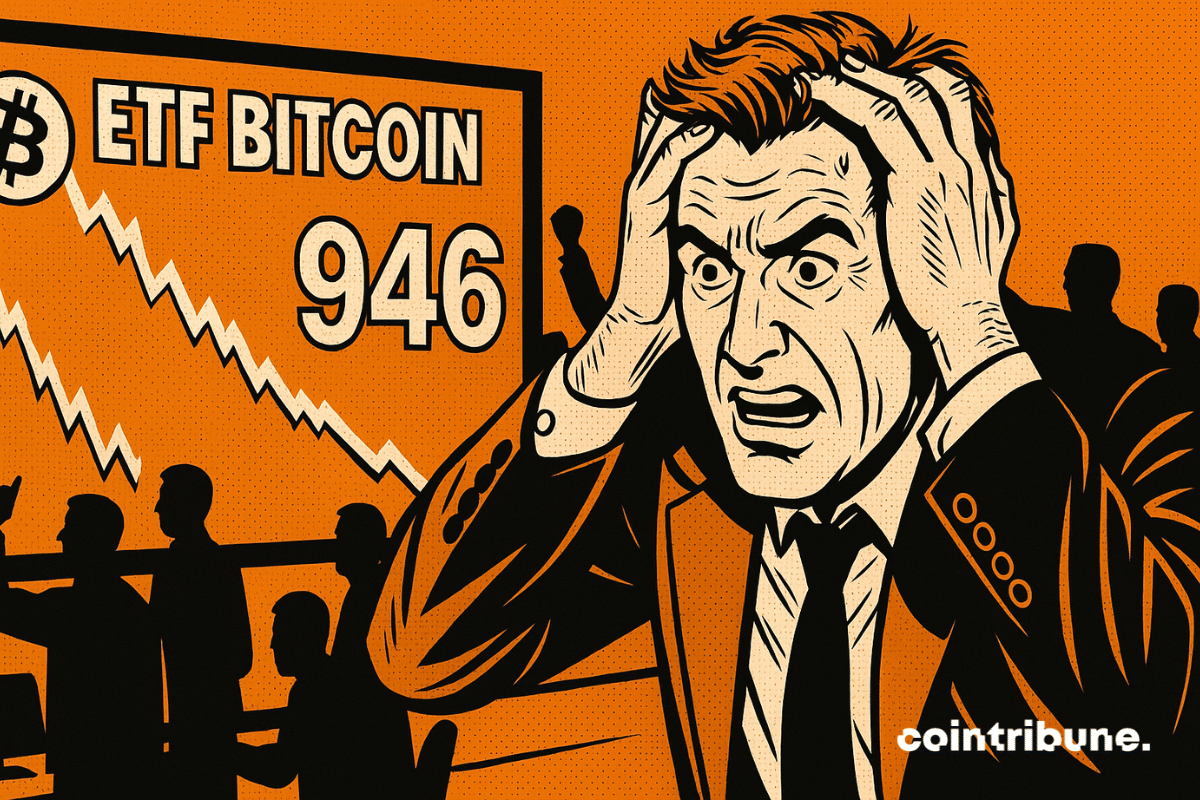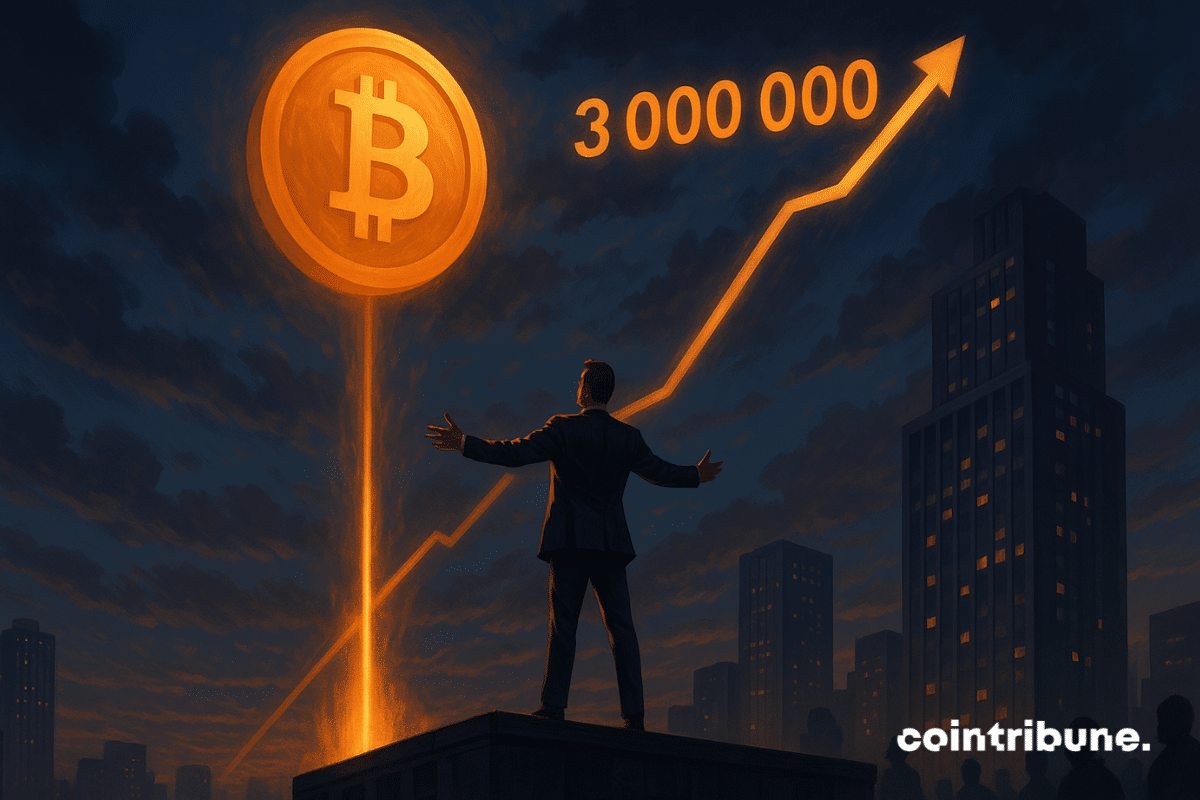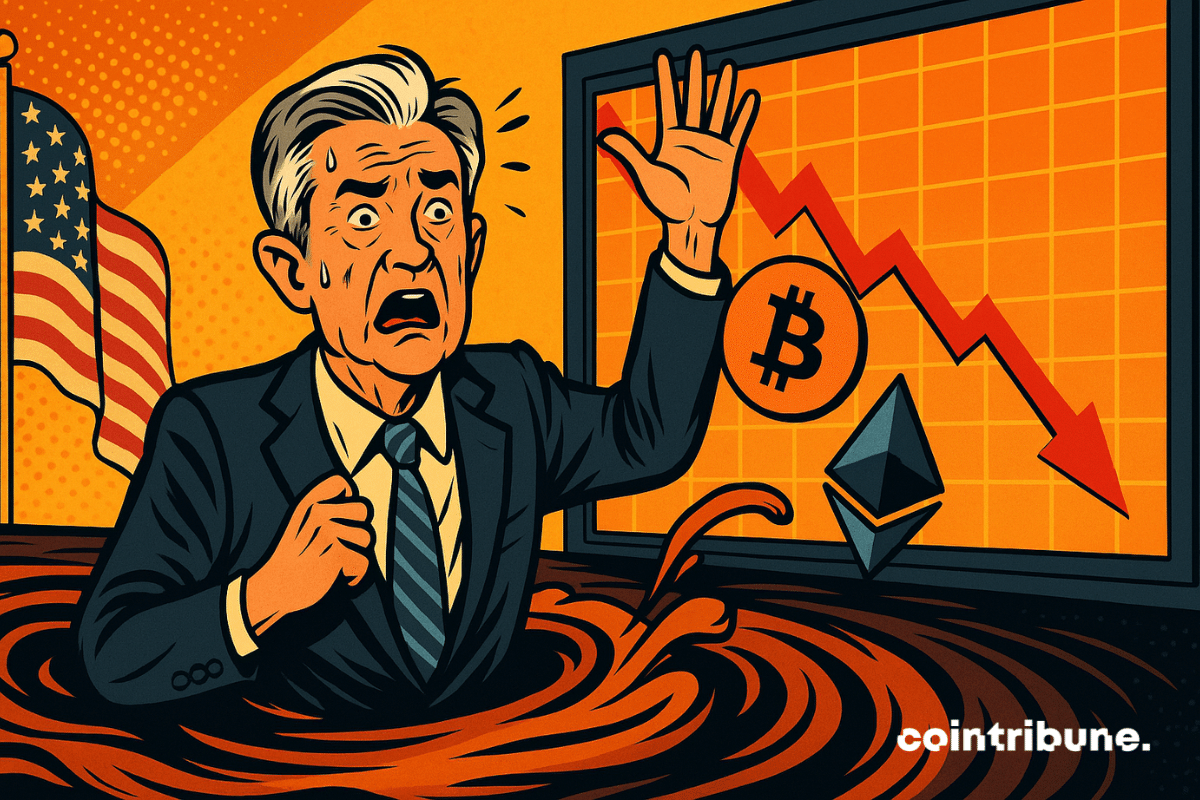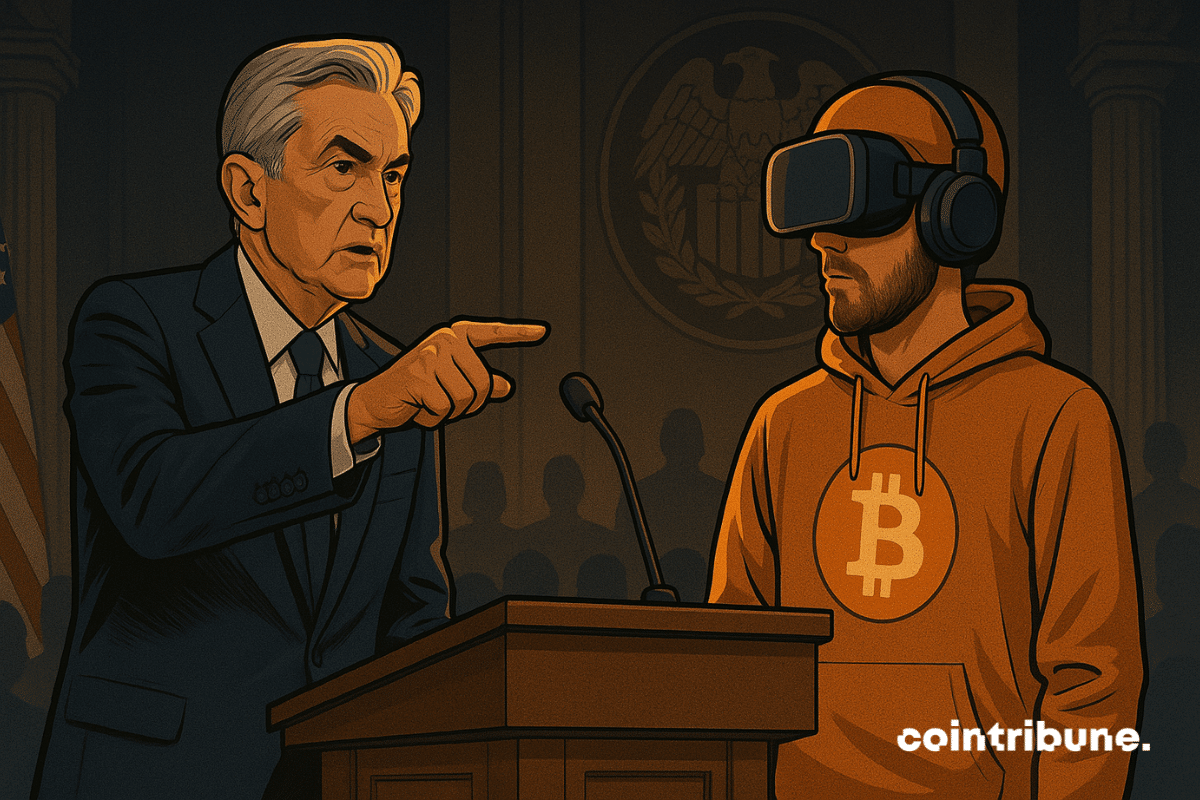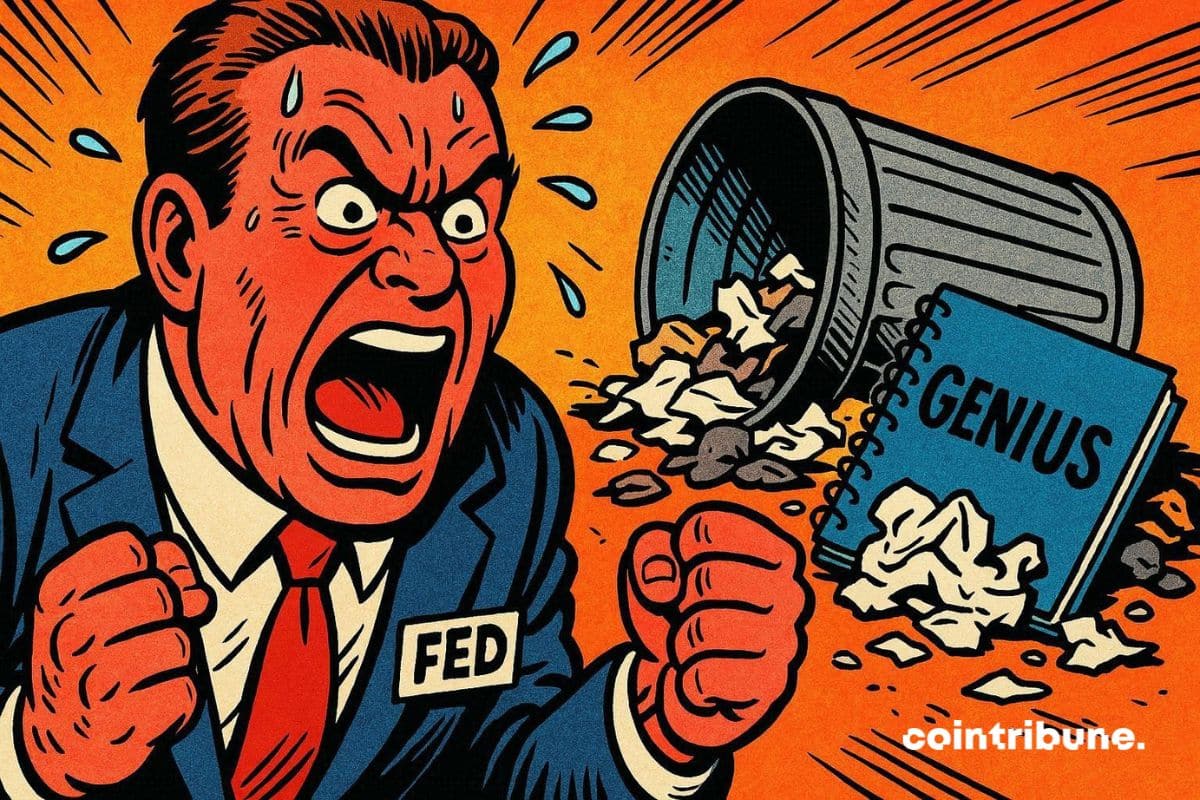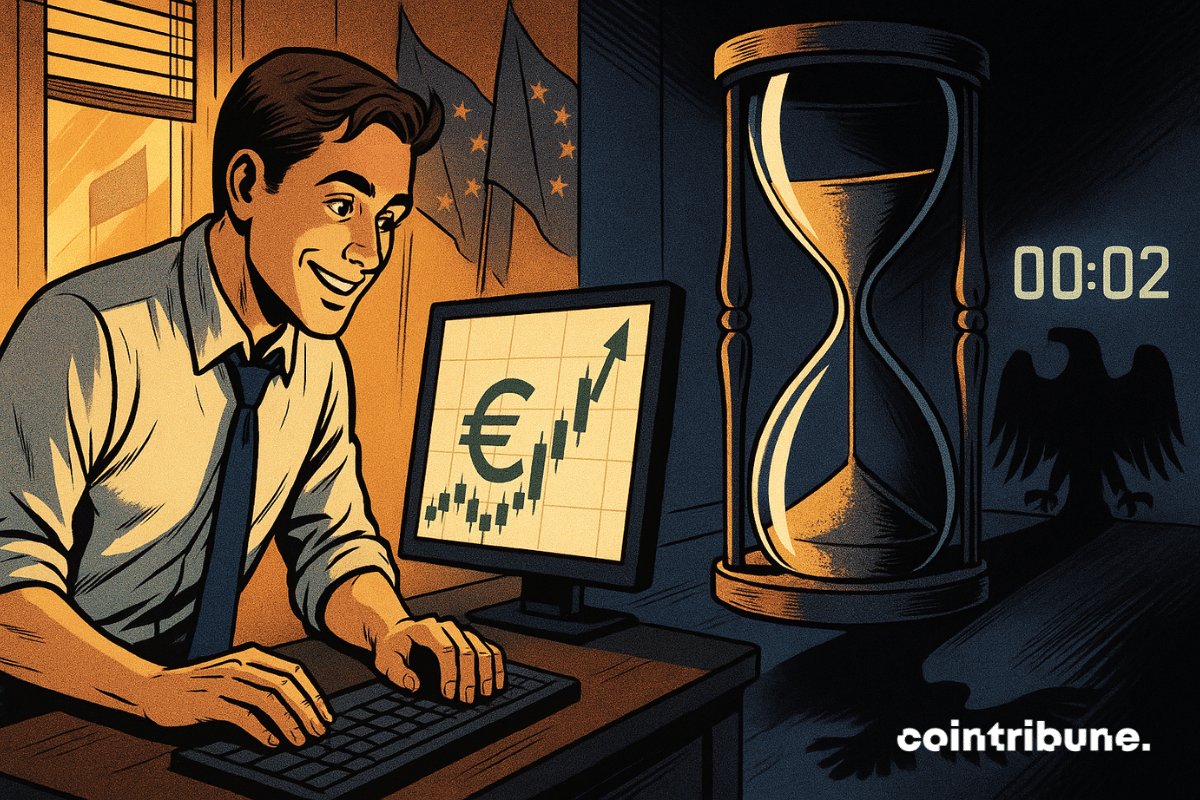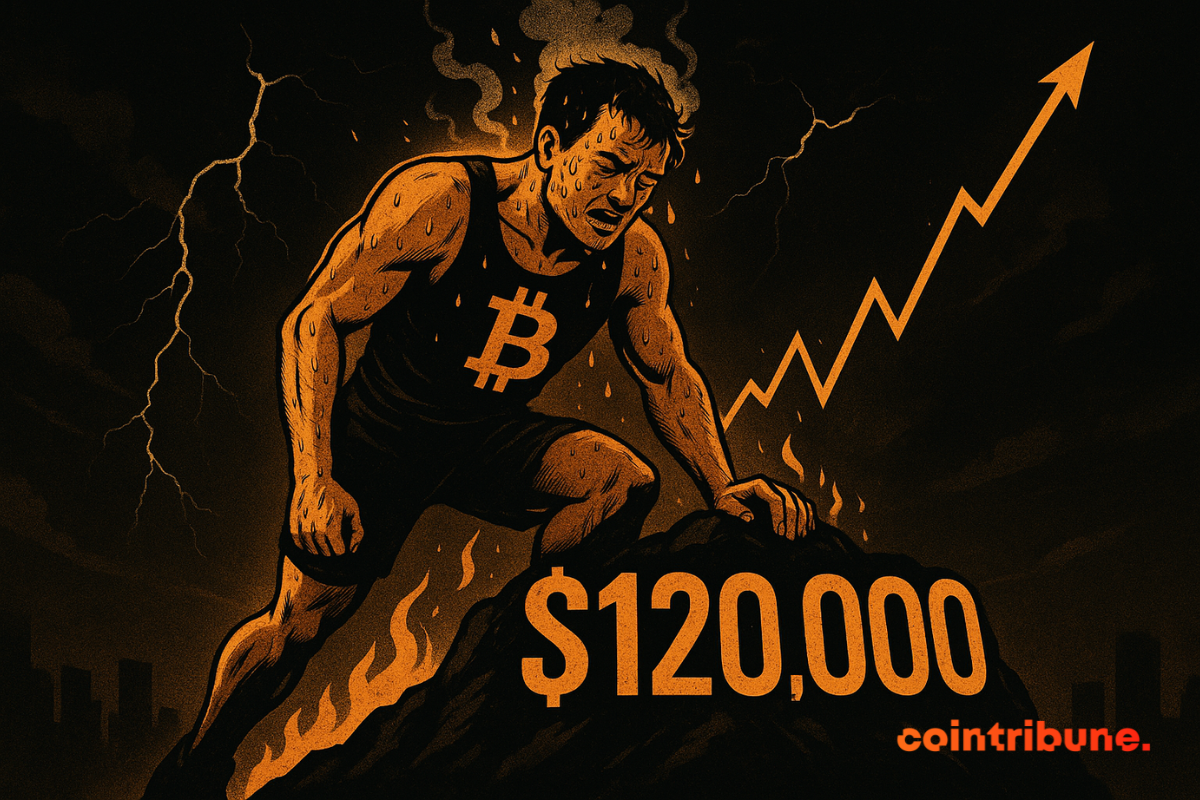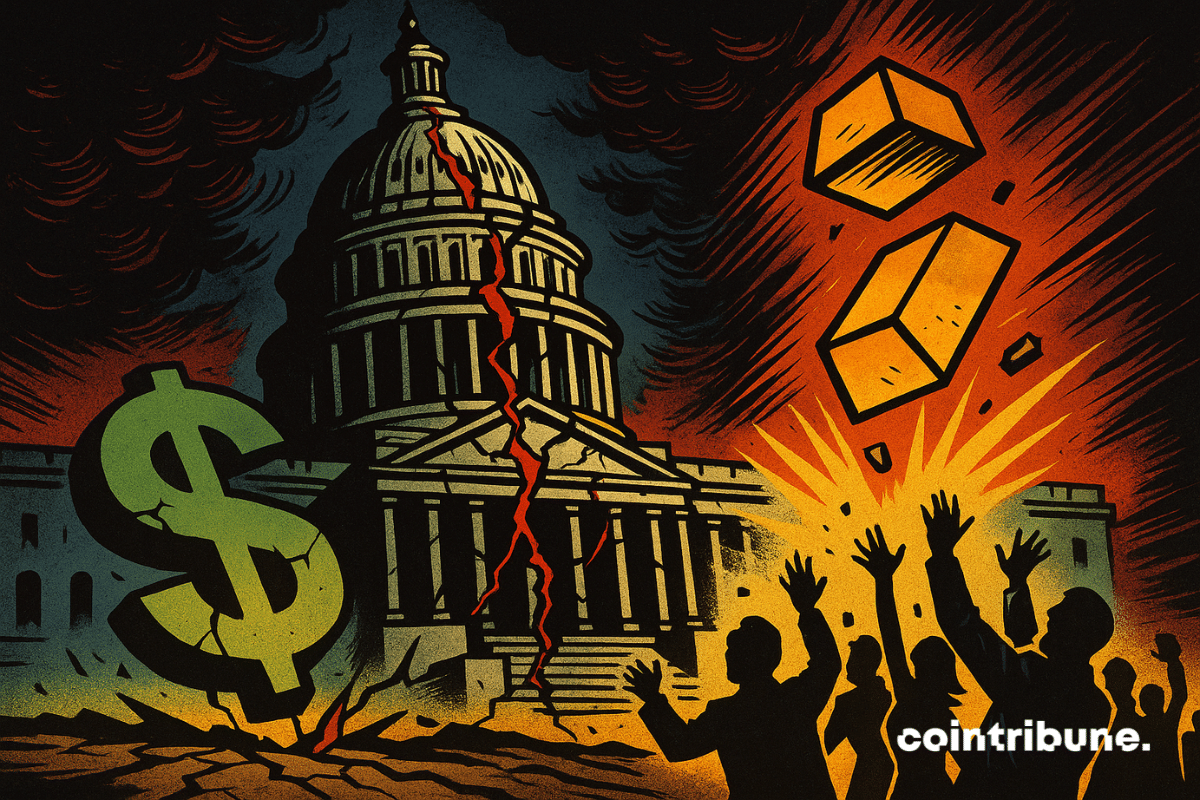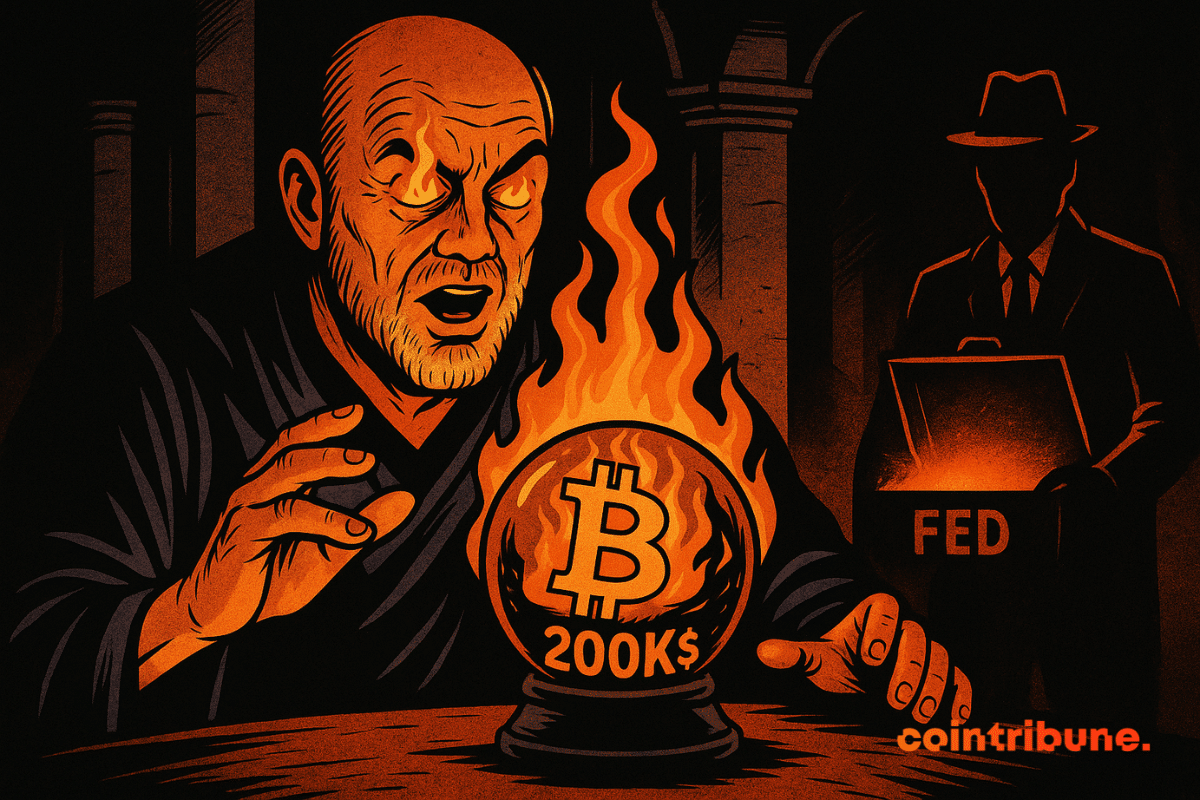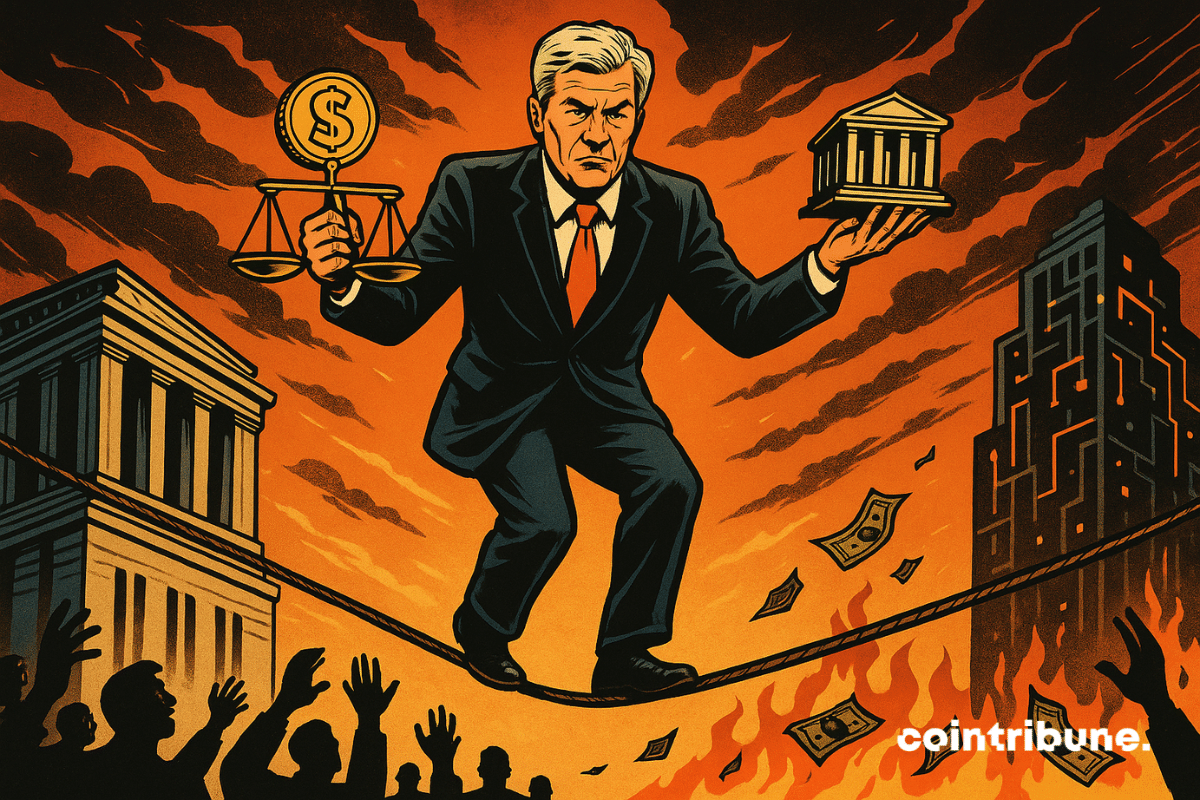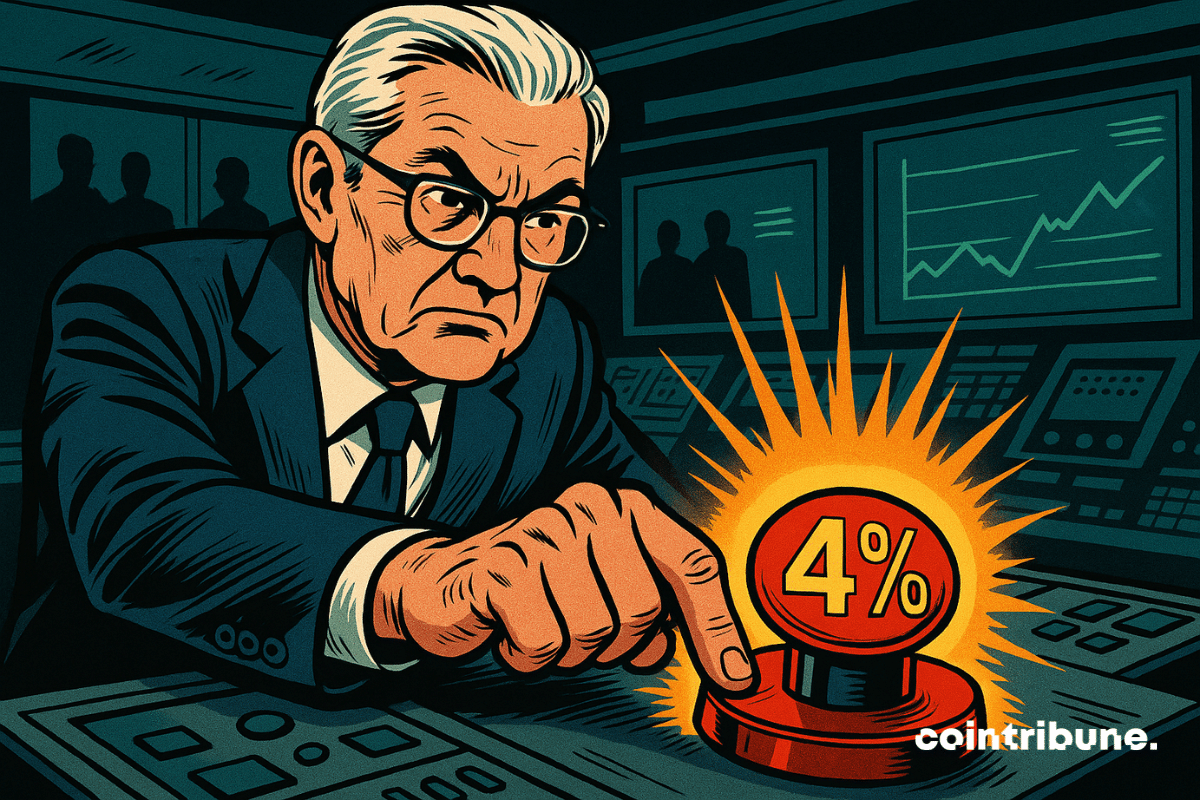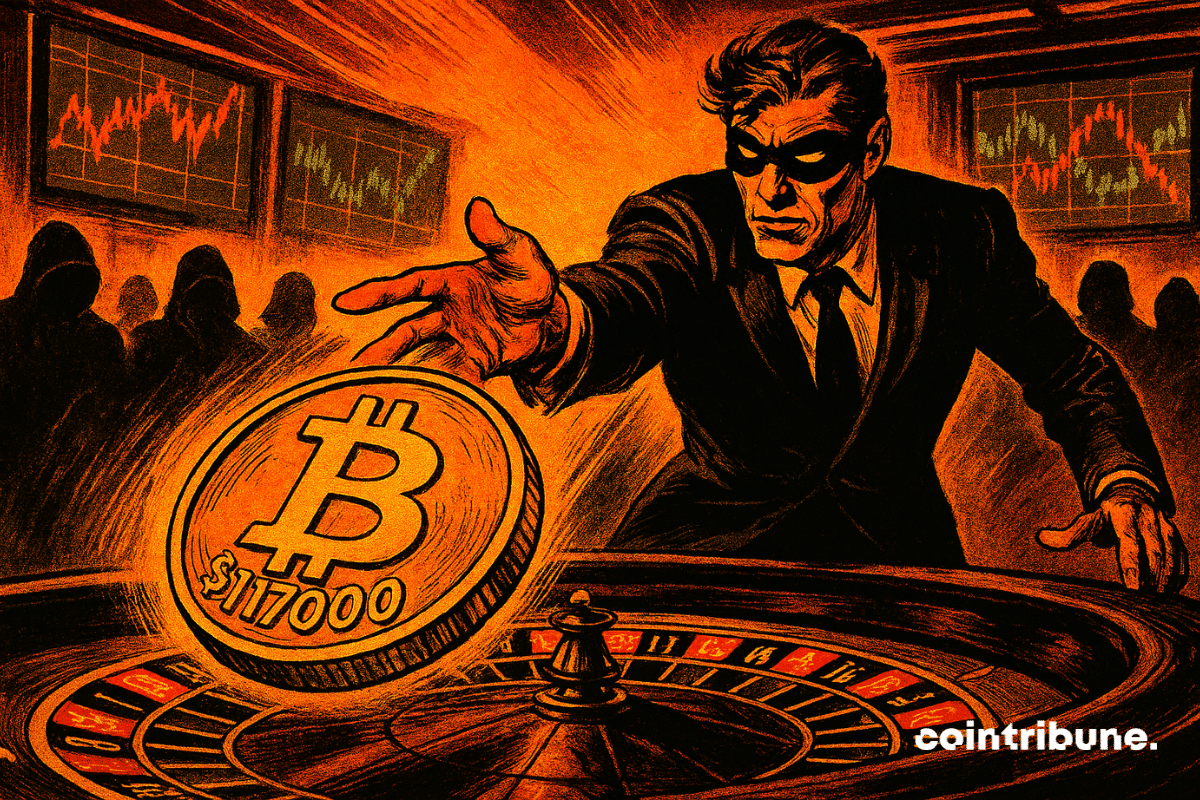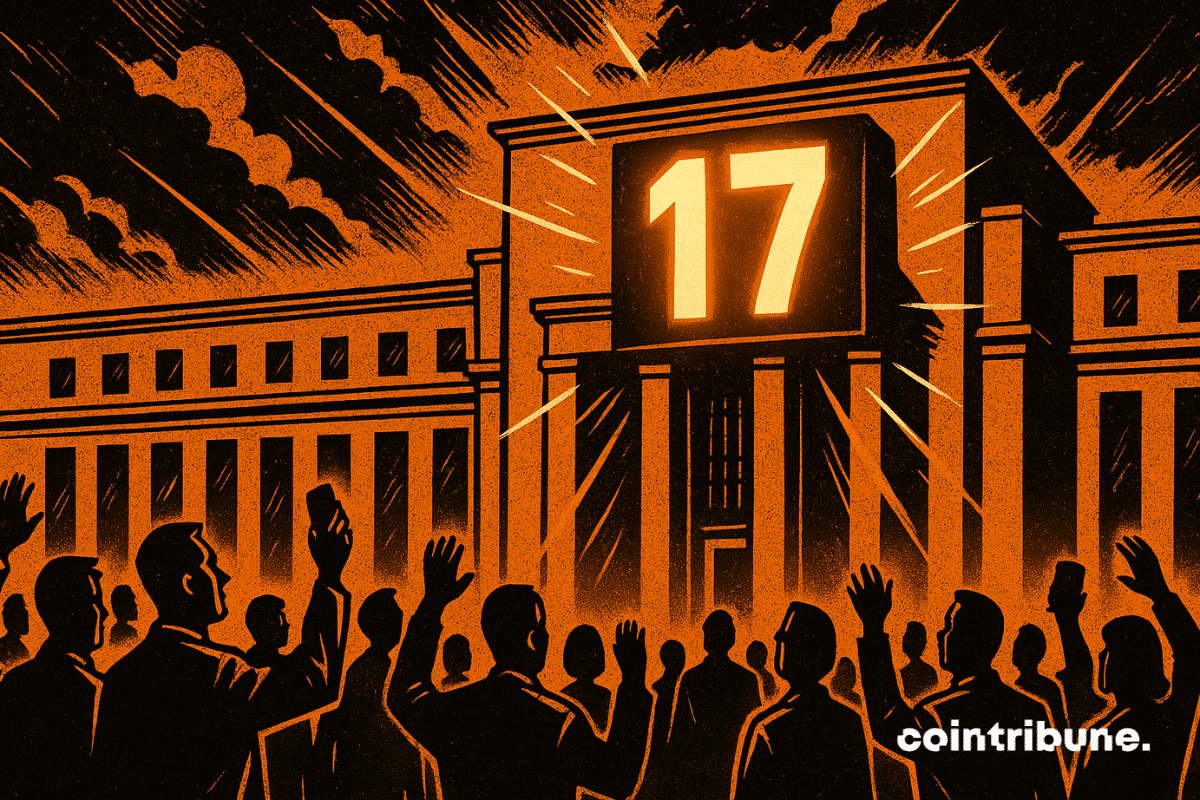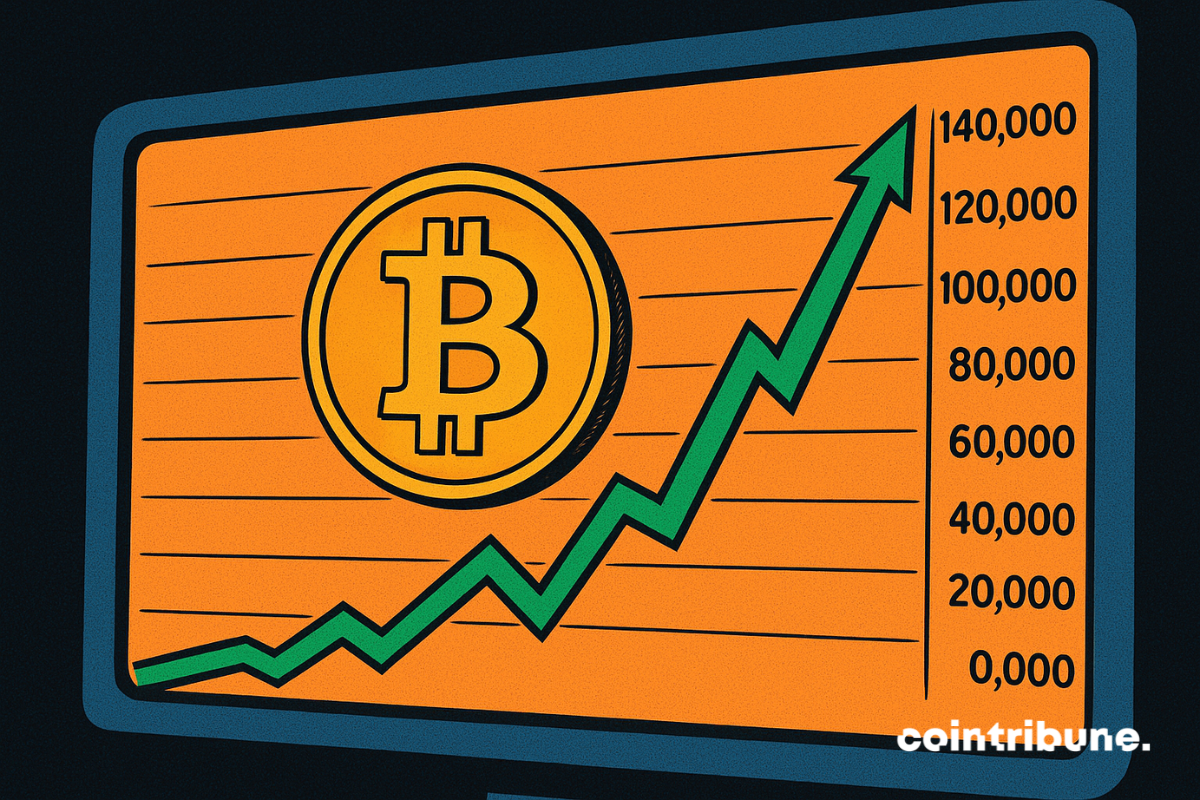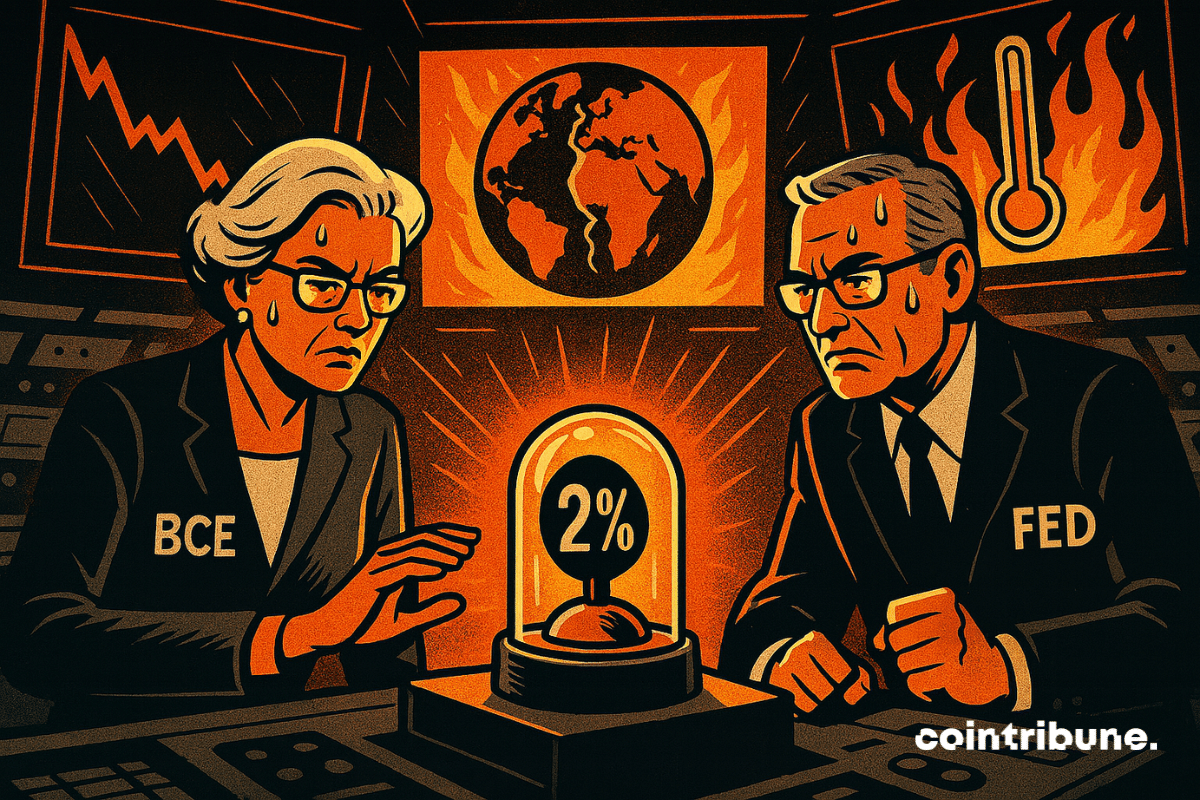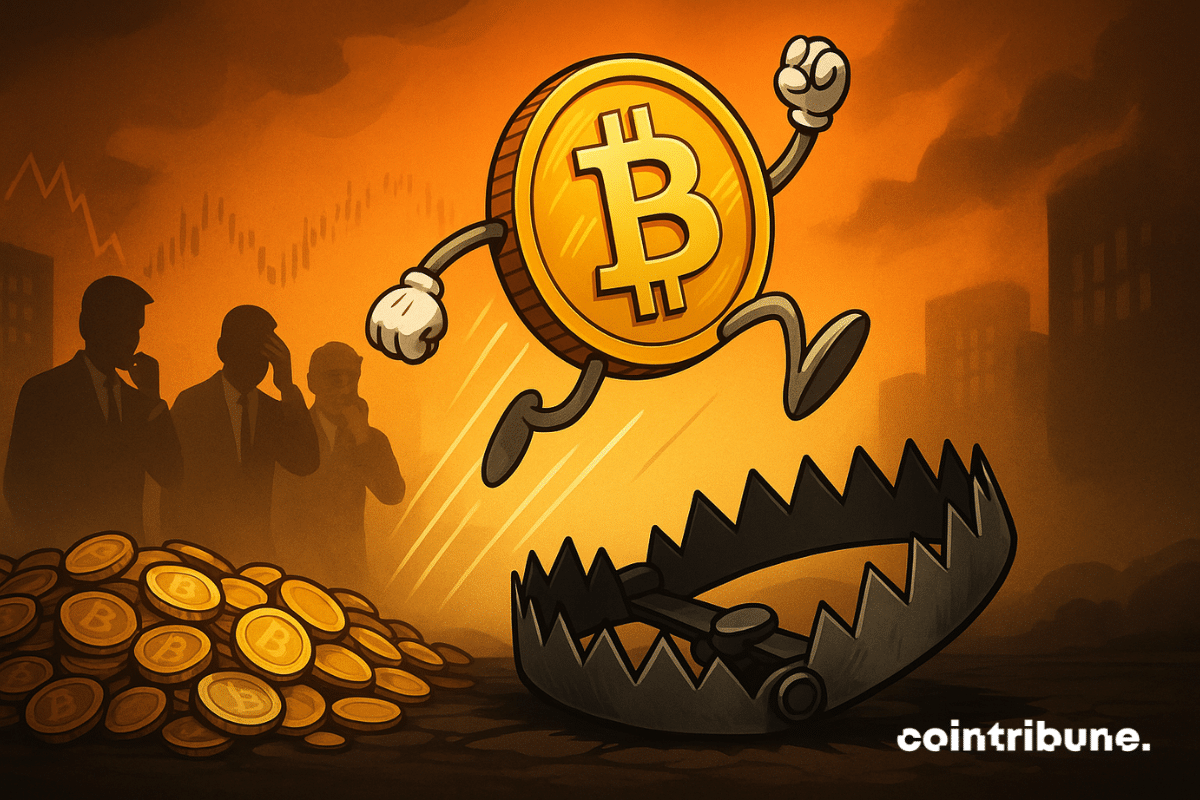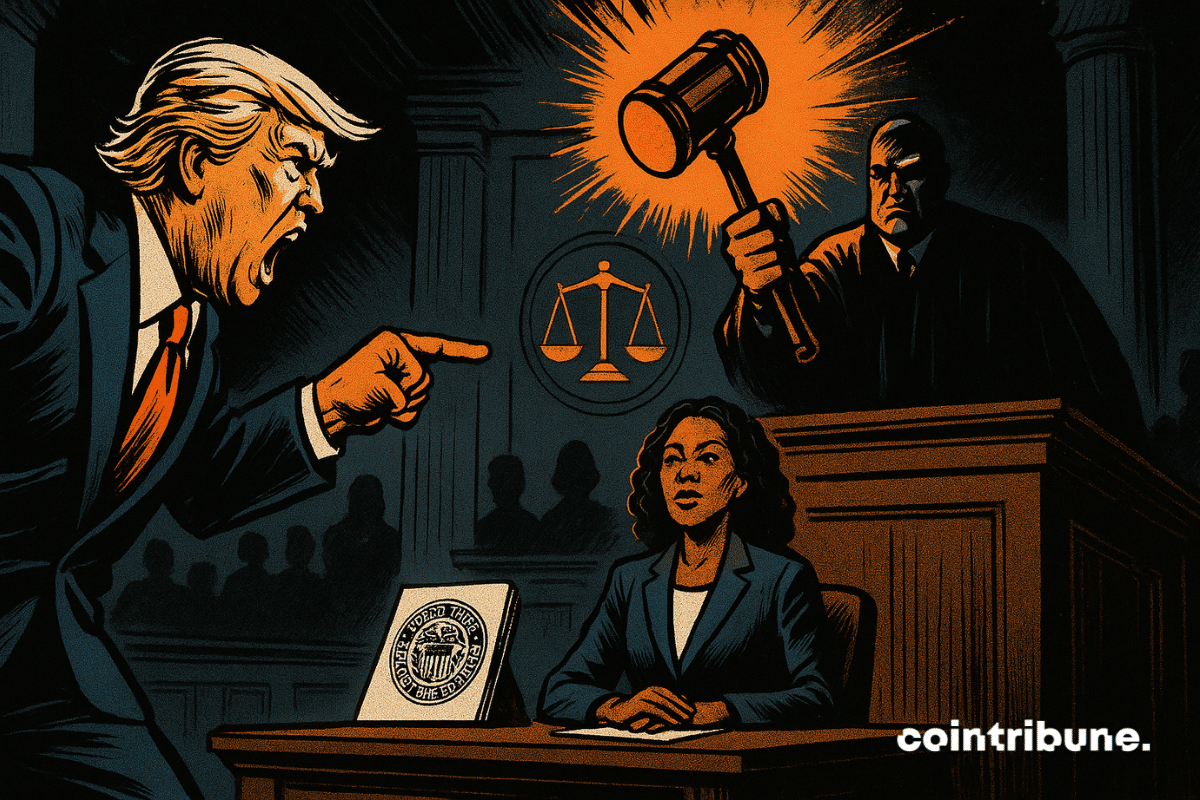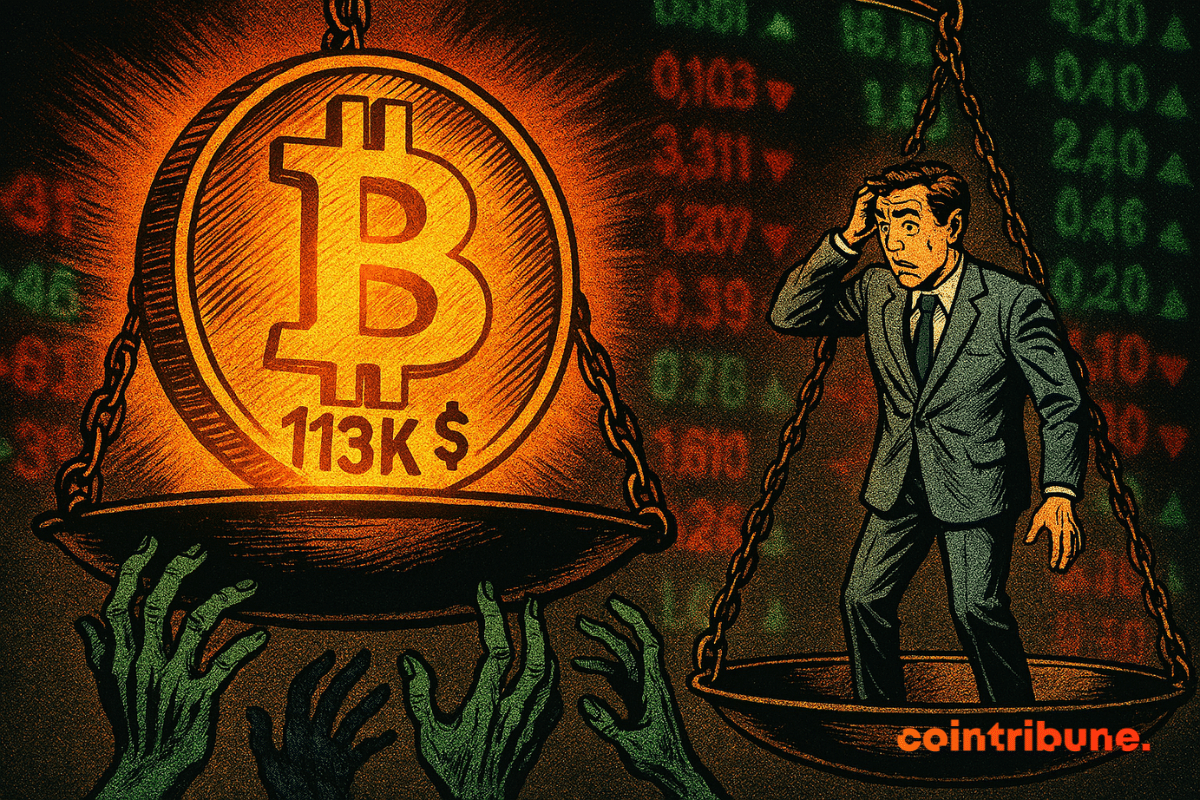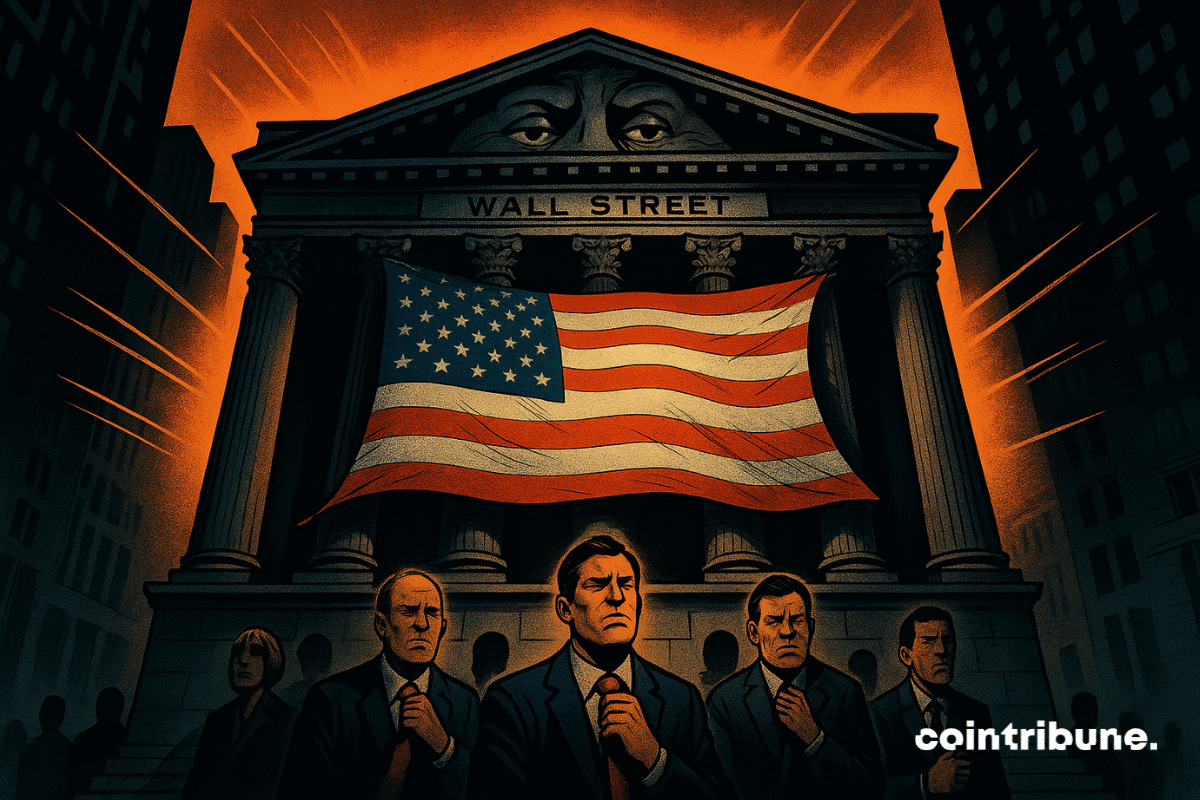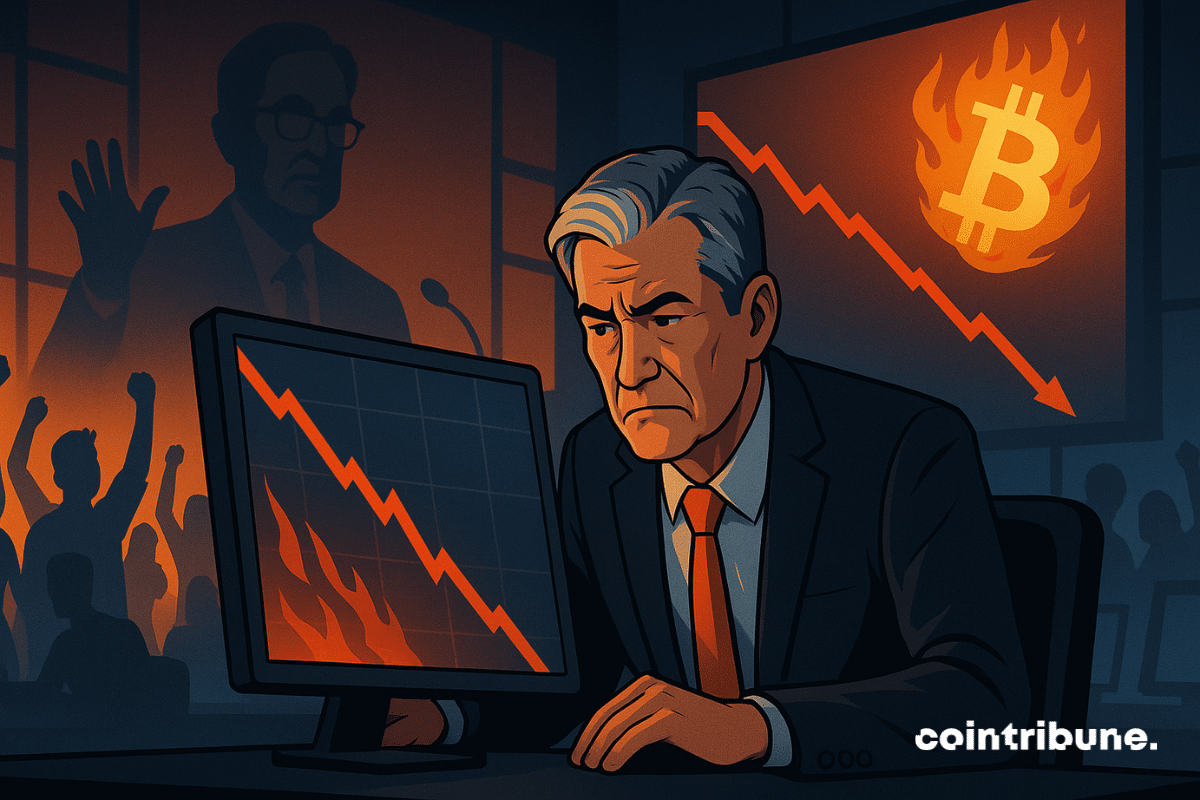Donald Trump launches this week the interviews to designate the successor of Jerome Powell at the head of the Fed. A crucial decision that could change everything: interest rates, financial markets, and even the Bitcoin price. Who will be chosen and what impacts for crypto?
US Federal Reserve (FED)
The US Federal Reserve could well be starting a decisive turning point. According to the latest data from the CME FedWatch Tool, markets now estimate an 85% probability of a rate cut as early as December. A rapid development, which contrasts with the firmness displayed in recent months. If this scenario is confirmed, it will mark the end of an unprecedented monetary tightening cycle and could disrupt the balance of financial markets.
Bitcoin is navigating turbulent waters as November comes to an end. After a sharp drop below $81,000, the cryptocurrency attempts a timid recovery around $88,000. Traders are now scrutinizing technical signals while a "death cross" looms over daily charts. The Thanksgiving week promises its share of macroeconomic turbulence. Will BTC manage to reclaim $100,000?
November 2025 sees the Fed paralyzed by uncertainty, while Trump multiplies attacks against Powell, calling him a "mental patient." Between frozen rates and presidential insults, the crypto market wavers. Who will emerge victorious from this chaos?
Caution settles in on the markets. In a few weeks, investors have seen their hopes for monetary easing vanish while Bitcoin lost its momentum. But does this correction signal a simple pullback or the start of a real bear market?
Uncertainty hovers over crypto markets as macroeconomic conditions slow down the usual November bullish momentum. Will bitcoin manage to maintain its reputation as the best performing month of the year?
American Bitcoin ETFs experienced a massive outflow of capital last week. Institutional investors turned away after Jerome Powell dashed hopes of a rate cut in December. Contrary to this, Solana ETFs stand out with record inflows.
Tom Lee, an iconic figure of crypto optimism, just unveiled a projection that is a bombshell in the ecosystem. According to him, Bitcoin could reach between 1.6 and 2 million dollars by 2030. But that's not all: he even mentions a 3 million scenario. How does he justify such ambition?
The US Department of Labor will publish inflation data on Friday despite the government shutdown. An unusual decision five days before the Fed's crucial interest rate decision. Crypto investors are holding their breath.
It's historic. Tomorrow, October 21 in Washington, the US Federal Reserve hosts the elite of the crypto sector for an unprecedented conference on payment innovation. Sergey Nazarov from Chainlink, the heads of Circle, Paxos, and Coinbase: all will be front and center. Stablecoins, tokenization, AI... An agenda that says a lot about the new era the Fed seems ready to embrace.
The GENIUS law, presented as the solution to secure stablecoins, hides alarming flaws according to the Federal Reserve (Fed). Michael Barr sounds the alarm: systemic risks, regulatory arbitrage, and threats to your crypto investments. Are stablecoins really stable?
The European stock market has just closed an exceptional week. The STOXX 600 rises by 2.8% and continues to break records. Health, banks, and mining lead the way, driven by palpable optimism.
Bitcoin climbs, Wall Street applauds, but the RSI coughs: does too many ETFs kill the ETF? The king asset flirts with euphoria… and traders already feel the chill.
Bitcoin consolidates above 100,000 dollars, driven by institutions and the anticipation of the outcome of the "BITCOIN Act."
On the brink of a total shutdown, Washington shakes global markets. This Monday, September 29, the budget deadlock in the US Congress revives the specter of a shutdown as early as Wednesday, plunging investors and institutions into uncertainty. In an already uncertain climate, marked by central bank hesitations and the fragility of US indicators, this political stalemate raises fears of a major loss of visibility. Investors are repositioning urgently, between a flight to safe havens and anticipation of macroeconomic turbulence.
What if an overly soft banker awakened the bitcoin beast? Behind the Trumpian nominations, a financial parabola ready to explode… Novogratz lights the fuse, hide the dollars!
Economy: JPMorgan anticipates tensions on the Fed and integrates stablecoins without fearing for its deposits. We tell you more here!
Barely announced, the Fed's rate cut has reignited crypto market enthusiasm. However, behind this surge lies another driver: the leverage effect of project-specific announcements. Avalanche (AVAX) and Hyperliquid (HYPE), driven by aggressive strategies, captured most of the bullish flows. Between monetary steering and targeted initiatives, token performance depends as much on macroeconomic decisions as on their ability to convince on the ground.
Powell cuts timidly, Trump shouts louder than ever, and crypto cheers. In Washington, the FED lowers its arms, while Bitcoin and stablecoins revise their choreography.
Wednesday, bitcoin is at stake: between the Fed's boost, the 117,000 $ wall and hungry whales, guaranteed suspense for the crypto market star.
This Wednesday, September 17, the US central bank is expected to cut its key interest rate by 25 basis points. A decision already priced in by the markets, but far from trivial, as inflation remains above target and employment slows down. Behind this monetary shift, investors are looking for a signal. Temporary shock or catalyst for a new cycle? From bitcoin to gold, through Wall Street, all assets are watching Jerome Powell’s verdict.
Bitcoin has broken records ten times this year. Spending Christmas closer to 150,000 dollars than to 100,000 dollars is not far-fetched.
The ECB freezes its rates, the FED is preparing to cut them... What if, in this monetary ping-pong, it was ultimately the real economy that served as the lost ball?
The latest US inflation data propels bitcoin to new heights, but analysts remain divided on the short-term trajectory. The flagship crypto flirts with $115,000 as speculation about a Fed rate cut intensifies. Could a new correction precede the long-awaited surge?
The showdown between Donald Trump and the American Federal Reserve reaches an unprecedented threshold. On September 9, the federal court suspended the dismissal of Lisa Cook, Fed governor, decided by the American president. A rare decision that highlights the major stake of this conflict: the independence of the central bank against political pressures. Ahead of a strategic meeting on rates, this judicial halt revives the debate on the limits of executive power in conducting monetary policy.
Bitcoin flirted with $113,000, traders were enthusiastic, the Fed was complacent, and Saylor was euphoric. But without spot buying, beware of a backlash: the intoxication could quickly turn to vertigo.
In the United States, the employment report expected this Friday, September 5, could seal the fate of interest rates. Markets, fueled by hopes of monetary easing, are watching for the slightest sign of weakness. However, the equation remains fragile: a slowdown sufficient to justify a rate cut, without reigniting fears of a sharp economic downturn.
It's not just Bayrou's France that is struggling. Europe is going through a systemic crisis that the ECB's printing press can no longer solve. Despite years of massive injections, the eurozone is sinking into a vicious circle of stagnation and unsustainable debt. It seems that this time, unlike 2008, the ECB can no longer save Europe from the crash.
Crypto markets pulse to the beat of the Federal Reserve. As Jerome Powell mentions a possible rate cut in September, Santiment sounds the alarm. Could the current euphoria be hiding a trap for investors?
At $37 trillion, American debt reaches an unprecedented level, fueling doubts about the dollar's strength. While markets question, bitcoin climbs beyond $124,000, driving the entire crypto sector to new heights. Between budgetary concerns and a rush toward alternative assets, a shift seems to be occurring.
